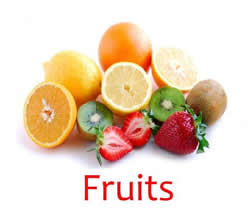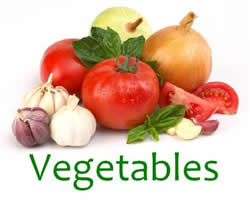Difference between Fruit and Vegetable Nutrition
Key Difference: As per botany, a fruit is the part of the plant that develops from a flower. Technically, it is the swollen ovaries of the plant. It also contains the seeds of the plants and is responsible for disseminating seeds. Botanists consider any parts of the plant, other than the fruit, to be a vegetable. This includes the stalks, leaves, roots, tubers, bulbs, and even the flower bud. Nutritionally, many fruits and vegetables are similar. They have lower calorie and fat counts. Fruits and vegetables are also generally high in fiber content.

The main problem while differentiating between fruits and vegetables is that there are two ways of doing it. The official way is to categorize them as per the definition in botany. However, most people and grocery industry categorize them as per taste and previous impressions.
As per botany, a fruit is the part of the plant that develops from a flower. Technically, it is the swollen ovaries of the plant. It also contains the seeds of the plants and is responsible for disseminating seeds. Most fruits are edible, and in fact these plants once relied on humans, other animals and birds to disseminate seeds. However, some fruits such as coyote melon, holly, ivy, mistletoe, privet, snowberry, thorn apple, etc. are inedible and may even be poisonous.
Botanists consider any parts of the plant, other than the fruit, to be a vegetable. This includes the stalks, leaves, roots, tubers, bulbs, and even the flower bud. An example of each: leaves (lettuce), stalks (celery), roots (carrot), tubers (potato), bulbs (onion), and flowers (broccoli).
However, many people categorize fruits and vegetables according to the taste, as whether it is sweet or savory. Fruits like apple, peach, pear, kiwifruit, watermelon and mango, which are sweet in taste and often eaten as snack or dessert are classified as fruits, whereas fruits such as tomatoes and zucchinis, which are savory are clubbed with vegetables.
 They are also categorized as per whether or not it requires cooking. Hence, sometimes the fruits and vegetables are incorrectly categorized, such as tomato, bell pepper, eggplant, okra, squash, pumpkin, green bean, cucumber, zucchini, corn kernels, and wheat grains are all technically fruits. Even spices like vanilla, paprika, allspice and black pepper are derived from berries and olive oil is made by pressing the olive fruit.
They are also categorized as per whether or not it requires cooking. Hence, sometimes the fruits and vegetables are incorrectly categorized, such as tomato, bell pepper, eggplant, okra, squash, pumpkin, green bean, cucumber, zucchini, corn kernels, and wheat grains are all technically fruits. Even spices like vanilla, paprika, allspice and black pepper are derived from berries and olive oil is made by pressing the olive fruit.
Nutritionally, many fruits and vegetables are similar. They have lower calorie and fat counts, especially as compared to animal products, such as meat, eggs, dairy, etc. Fruits and vegetables are also generally high in fiber content. A number of fruits and vegetables may also contain various antioxidants, as well as numerous vitamins and minerals.
There are many processed food items available on the market, which contain fruit or vegetable ingredients. However, they are derived products and hence do have the same nutritional value and integrity of the fruit or vegetable used to produce them.
Generally, one serving of fruits or vegetables is considered to half a cup. Furthermore, one serving of most fruits has a bit more calories than one serving of vegetables. This however does not include dense, starchy vegetables such as potatoes or beets.
Fruits and vegetable are considered a part of a healthy diet. In fact, most experts recommend that fruits and vegetable should account for half of the daily food intake; vegetable slightly more than fruits. It is recommended that one should have 2½ to 6½ cups of fruits and vegetable per day.
Fruits and vegetable are an important source of nutrition for all. Not only do they provide antioxidants, vitamins and minerals. They are also low in calories and high in fiber, which means that one can eat less and feel full for longer. Fruits and vegetable have also been shown by various studies to reduce the risks of cancer, heart disease, high blood pressure, stroke and diabetes.
Image Courtesy: diabetic-dieting.com









Add new comment